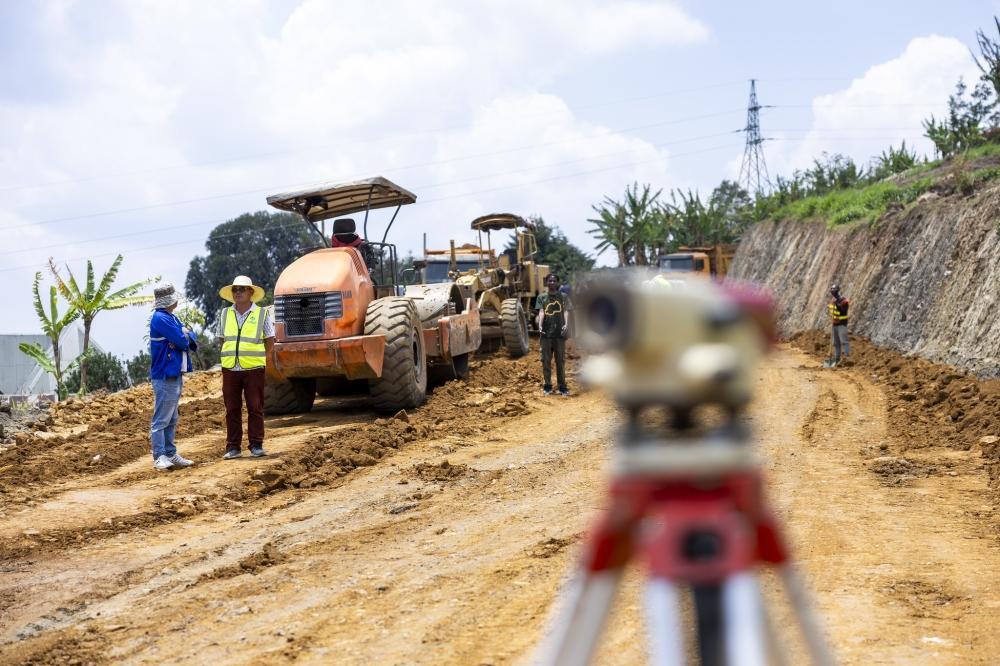Africa-Press – Rwanda. The government recently launched a Rwf 360 billion project to construct 215 kilometres of tarmac roads that will improve internal connectivity and link the country with neighboring countries, including Uganda, DR Congo and Burundi.
Below are key details about the four roads to be constructed.
Ngororero-Musanze-Cyanika road
According to Fidele Abimana, the Permanent Secretary of the Ministry of Infrastructure, the 72-kilometre Ngororero-Musanze-Cyanika road will traverse Ngororero and Nyabihu Districts in the Western Province, and Musanze and Burera Districts in the Northern Province, connecting to Uganda through the Cyanika border.
Specifically, the Ngororero-Nyakinama-Musanze-Cyanika road will pass through sectors including Kagogo, Cyanika, Rugarama, Gahunga, Gacaca, Cyuve, Muhoza, Muko, Nkotsi, Shyira, Rugera, Matyazo, and Ngororero, linking the communities through easing movement of people an agricultural produce.
The Musanze-Cyanika road, which is currently a tarmac road, requires rehabilitation due to significant damage over time.
Upon the successful completion of the road project, it is anticipated that several benefits will follow.
These include enhanced economic growth, improved living standards, and facilitated trade both domestically and with neighboring nations (Uganda, Burundi, and DR Congo), generation of employment opportunities, and the promotion of a cleaner and safer environment.
It is also expected to reduce and control transport costs.
Kinigi-Kora road
The Kinigi-Kora road spans 28 kilometres.
The road extends from Kinigi Sector in Musanze District, along the Volcanoes National Park, to the small town of Kora in Nyabihu District.
The road will facilitate the transportation of people, goods, and agricultural produce, particularly Irish potatoes, pyrethrum, beans, wheat, and maize, which are widely grown in the area.
Kinigi town is the gateway for tourists visiting Volcanoes National Park, a UNESCO World Heritage Site famous for its mountain gorillas.
This makes the road crucial for tourism-related traffic and economic activity in the region.
Kazabe-Rutsiro road
The Kazabe-Rutsiro road, which runs from Ngororero District to Rutsiro District on the shores of Lake Kivu, covers 55 kilometres.
The road, which has been severely damaged, requires rehabilitation, according to the Ministry of Infrastructure.
Bugarama-Bweyeye road
The 60-kilometre Bugarama-Bweyeye road in Rusizi District will be upgraded to a standard two-lane road with a seven-meter carriageway.
“The road connects the Bugarama and Bweyeye border posts, which connect Rwanda to Burundi,” said Abimana.
1.4 million Beneficiaries
The four road projects will extend road improvements to the northwestern and southwestern regions benefitting an estimated 1.4 million Rwandans.
Beneficiaries include farmers, traders, producers, and the general population, all of whom will benefit from enhanced road infrastructure, improved connectivity, and better trade opportunities.
Source of funding
The Rwf360 billion project is funded by the African Development Bank.
Disaster-resilient roads
Abimana mentioned the importance of designing climate-resilient road infrastructure.
“Some of the roads being rehabilitated are in areas prone to natural disasters like landslides, which have already damaged parts of the existing roads. We recommend incorporating climate resilience into the planning and construction process, including natural solutions like planting trees and grasses to stabilize the roads and make them more durable,” he explained.
Construction of one-stop border post
To facilitate regional trade and transport, the project will also construct a One-Stop Border Post at the Akanyaru Haut Border between Rwanda and Burundi.
The proposed project will enhance regional integration in the East African Community (EAC) by bridging vital links to the Central and the Northern Corridors.
EV charging stations
Abimana highlighted that road construction provides an opportunity to implement other related infrastructure projects more cost-effectively.
“For example, while constructing a road, contractors can also build platforms for future infrastructure, such as roadside stations or electric vehicle (EV) charging stations, to avoid extra costs later,” he noted.
The Ministry of Infrastructure is developing a master plan for electric vehicle charging stations, with a focus on increasing such infrastructure upcountry to ensure that no car travels more than 50 kilometers without encountering a charging station.
For More News And Analysis About Rwanda Follow Africa-Press






